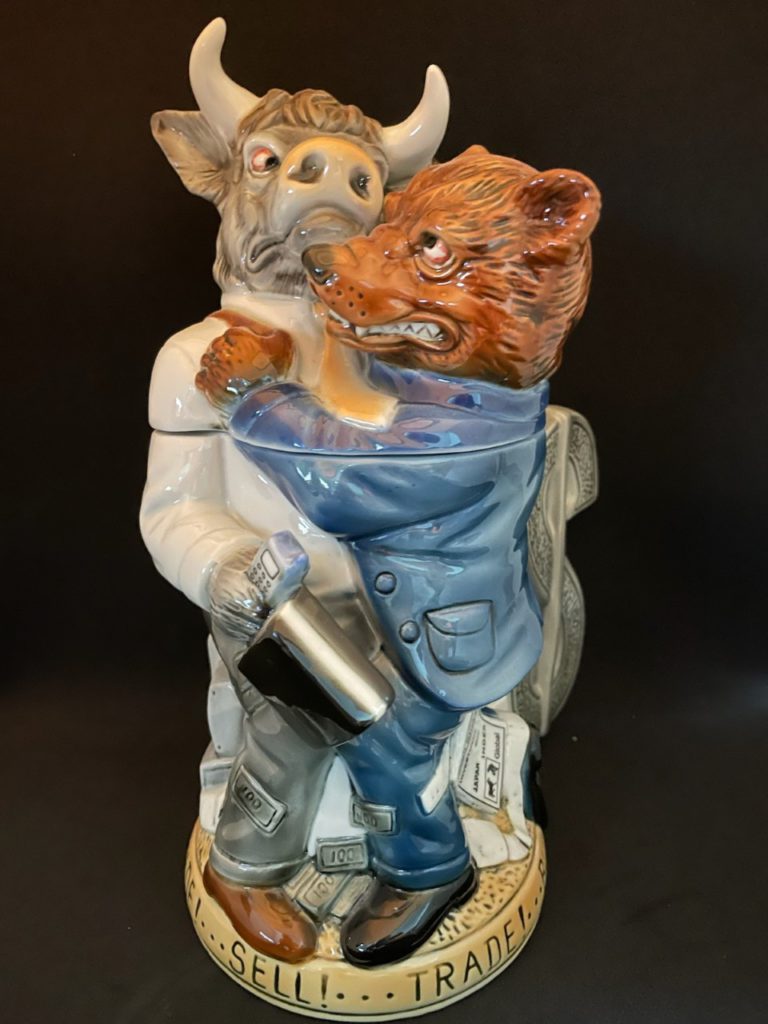It’s no secret that the economy is softening and the Federal Reserve was way late to begin its rate hike campaign. It’s also no secret that the stock market has been witnessing a bloodbath in almost any speculative companies and sectors. If there is no path to profitability or already seeing strong cashflows, those left in the cold may have their shares down 50% or much worse! To sum up the carnage, the U.S. stock market (S&P 500) has seen well over $6 trillion in combined wealth destruction since the end of 2021.
One aspect that investors fight about all the time is what marks a correction versus what marks a true bear market. A bear market is far worse — generally considered to be a 20% drop in the value of major stock indexes versus 10% that defines a correction. Again, many stocks and sectors are down much worse.
Collectors Dashboard evaluates high-end collectibles as an alternative asset class. The same funds that could have been used to buy stocks, bonds and even real estate are ending up in high-end collectibles. This pertains to fine art, sports collectibles, rare coins, stones, comic books, autographs, historical items, collector cars, fine watches and jewelry, wine and rare whisky and so on. Many of these categories have so far seen much of the interest, particular for the items deemed scarce and in high demand, somewhat immune to the broader economic and market value plunge that has been seen. That may not continue indefinitely if things get far worse, but even the threat of war and rising rates have not caused any real damage to the high-end collectibles market.
The one aspect of collectibles that has been gutted is the digital and cryptocurrency markets. They have effectively seen a classic market crash with a 50% sell-off. Despite a 3% rise in the price of Bitcoin back to $30,000 at last look, Bitcoin was down 37% year-to-date and was down about 58% from its peak in November 2021.
Meanwhile, traditional safe-haves like gold and silver (which are taxed the same as collectibles) have come down significantly from their early 2022 highs. Gold was down less than 1% YTD, and down 11% from its highs. Silver was down 8% YTD and down 23% from its highs.
Collectors Dashboard wanted to offer up what the current bear market and correction levels might look like in raw index levels. On last look, the Dow Jones Industrial Average was 31,400 and the S&P500 3,925 (both rounded for simplicity). The tech-heavy NASDAQ was at 11,475 (also rounded for simplicity).
For a bear market to be confirmed in the S&P 500, the 20% correction from the peak would be rounded to 3,837 on the index — less than 100 points from the current level and much closer based on the lows seen earlier in this same trading session.
The Dow Jones Industrial Average would have to close below 29,450 before that de facto bear market is triggered, and the 30 stocks in the longest running major index (price-weighted rather than market cap-weighted) still has nearly a 2,000 point cushion before the bear market.

The NASDAQ Composite has so many battered and bruised stocks that it is already in its own bear market with a drop of almost 30%. The main technology leaders are underperforming the broader market as the market is re-rating these growth stocks down to lower valuation multiples due to slowing growth concerns and due to the rise in interest rates. The market has been brutal for the “A-Team leaders” of the last decade:
- Alphabet (GOOGL) -26% from highs and -22% YTD
- Amazon.com (AMZN) -42% from highs and -35% YTD
- Apple (AAPL) – 24% from highs and -20% YTD
Other NASDAQ former leaders are now taking it even worse:
- Meta Platforms (FB), the company we will still refer to as Facebook, was down 50% from its highs and -43% YTD
- Microsoft (MSFT) -37% from highs and -24% YTD
- NVIDIA (NVDA) -50% from highs and -42% YTD
- Tesla (TSLA) -42% from highs and -33% YTD.
This too shall pass, but sometimes things have to get better before they can get worse. By all classic measurements, the U.S. hasn’t even hit a formal recession yet. This inflation trend and a strong employment market is likely to make the coming recession (assuming it comes) different than past recessions with what may be less pain spread out in all aspects of the economy.
Categories: Cars & Auto, Coins & Money, Comic Books, Digital& NFT, Fine Art, Misc., Non-Sports, Sports, Watches & Jewelry, Wine & Whiskey


